Out and About Again
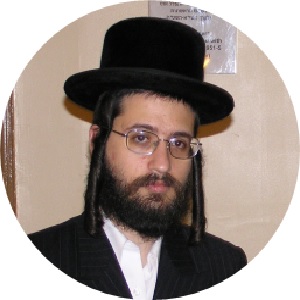
Melbourne’s Jews emerge from the longest lockdown

While almost everything is computerized in modern, friendly Melbourne Airport, these days you need actual people to approve the sheaves of paperwork and permits that travelers are required to present in order to enter almost any country.
So as the line snaked forward, the clerk across from me took my passport, typed in a few keys, instructed me to lower my mask, and smiled.
“You can pass,” he said.
So much for the urban legend about people on this bottom-of-the-world continent walking around on their heads with their feet in the air.
I held out the folder with my paperwork and felt a bit of disappointment. For naught I had sat filling out these forms. I even answered a long, tedious questionnaire, detailing everything I had done in the last ten years.
“Aren’t you going to stamp my passport?” I asked.
“No, we haven’t been doing that for awhile already,” he replied affably in his lilting Australian-accented English.
“Oh, well,” I sighed. “I came from the other end of the world just for the stamp.”
The clerk smiled again.
Welcome to Melbourne, Australia, a member of the Commonwealth of Nations of the British crown. And as long as the folks at Buckingham Palace feel good about it, the Australians cooperate. The queen appears on their Australian dollar bill, a representative of Her Majesty in Canberra signs on the prime minister’s appointment, and members of the royal family visit often.
Flying from Amsterdam to Frankfurt, from Frankfurt to Bangkok, and then, a flight southward to what felt like the end of the earth, we reached our destination, but a whole day on the calendar seems to have gotten lost. Anyone traveling from the West Coast of the US to Israel knows that feeling — when I landed in Melbourne, it was already the end of the next day.
Outside, Rav Binyamin Koppel, the rosh hakahal of the Adass Israel community in Melbourne, was waiting for me. At any hour of the day, you can find Rav Binyamin busy on behalf of the community. He is following the path of his father, Rav Nosson, who served as rosh hakahal until his passing some 20 years ago, although Rav Binyamin himself has one foot out of Australia — his married children live in Lakewood, and he’s planning to join them one day.
But for now he’s the linchpin of the kehillah, and seems happy that finally there’s a guest from the outside, one of the first to the community since this locked down country opened up to the world. Over the next few days, I would enjoy the community’s heartfelt welcome and would learn that it’s not only the warmth and hospitality for which the Jews here are known. It’s also a strong yearning to see new faces. Two whole years have passed since Australia shut its borders to the rest of the world. That meant no guests, no rabbanim, and no meshulachim.
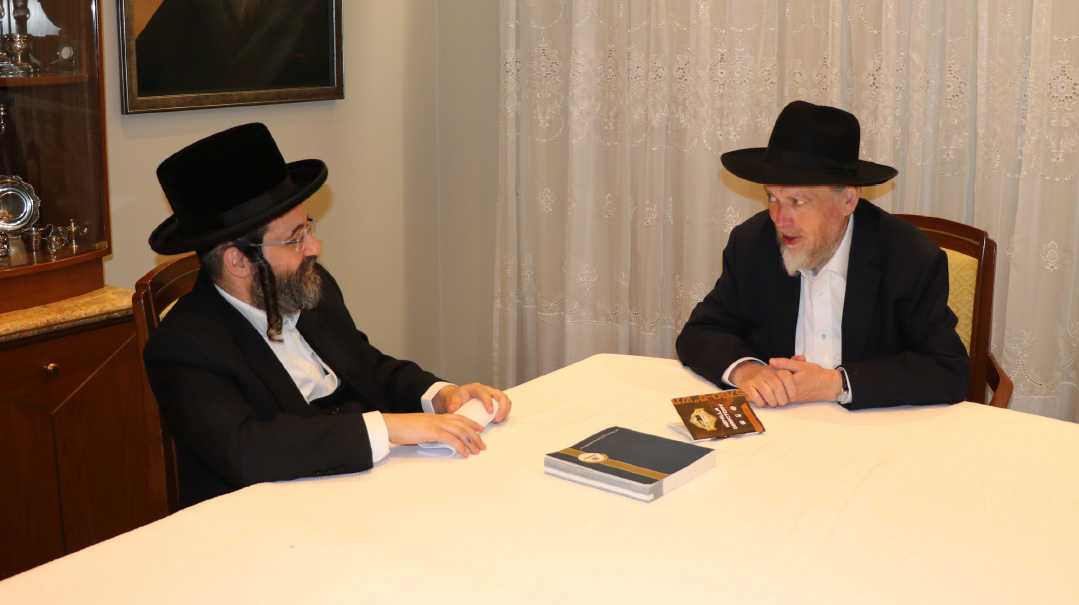
Rav Binyamin Koppel is busy with community affairs at all hours of the day. I was happy he had some time to sit with me
New Openings
The Jewish community in Melbourne is recovering from two years of Covid and an accumulated nine months of strict lockdown. No one came in, no one left. Some readers might remember the widely circulated picture of a father dancing at a local party after he couldn’t get a permit to leave for the wedding of his youngest child.
Yumi Rosenbaum, a businessman and occasional journalist, whom I met in the coffee room of Adass Israel, told me, “That was in our yard, in the private minyan I organized at my home.”
The picture of that mechutan was etched in the hearts of many, becoming a symbol of the rigidity of Covid rules in this part of the world, which often particularly affected the Jewish community and its essential needs.
That’s not to say that Melbourne is not one of the most beautiful cities in the world; it’s clean, modern, and fresh, and the Jewish area is located in one of the upscale neighborhoods of the city, featuring quiet streets, elegant homes, and attractive architecture.
Before my guide left me for the night, he made sure to tell me how Shacharis in Melbourne involves a bit of advanced planning. The minyanim begin quite early, and you have to find out what time the various nusach Ashkenaz and Sefard minyanim begin. And that’s really the essence of Adass Israel — it’s one roof for everyone.
The main sanctuary is run according to nusach Ashkenaz and the beis medrash is Sefard. The Yekkehs who were once the mainstay of the community have long been clearing the way for chassidim; many of the younger generation wear shtreimlach.
“When I was a boy, I hardly remember even one shtreimel in shul,” says Yossi Aron, a local journalist and today’s guide. Now, though, there is a spirit of unity that brings all stripes of the community together.
The weather here is comfortable. I came at a good time, right before Pesach, when summer had just ended in the Southern Hemisphere. Imagine lighting Chanukah candles late at night, after a hot sweaty day, and staying up for a very long Shavuos night under cloudy, stormy skies.
It’s Friday, and time to prepare for Shabbos. I pass by the Jewish shops on Glen Eira Road to feel a bit of the Shabbos preparation bustle. There are all types of Jews coming and going, between the J&J fruit and vegetable store owned by Nussbacher and Sternberg, the large Kraus supermarket, the Kosher Delight bakery, and the Fogel family’s Eshel delicatessen.
While Glen Eira Road is one of the central shopping areas in the Jewish neighborhood, I notice quite a few stores up for rent. A passerby explains that many restaurants and other businesses couldn’t sustain themselves during the two years of oppressive Covid laws.
Zevi Fogel, whose chassidish-attired bochurim come in to join us, presents me with the best of his kitchen’s offerings as he tells me a bit about life here. He was born in Melbourne, where most of his family still lives.
In addition to handling the deli’s bustling Erev Shabbos business, they provide catering services for simchahs and events. In the two years of Covid, when there were hardly any public events, they found their niche by providing food delivery services for Australia’s quarantine hotels. Anyone who came from the outside needed to isolate for two weeks in a hotel room, as there was heavy security on each floor.
This restaurant made headlines last Rosh Hashanah, when dozens of mispallelim from the beis medrash located above the store escaped through the shop, before the rest were surrounded by security forces and held for more than ten hours. The incident was the nadir in the ties between Australia’s Jews and the authorities, which are generally respectful and positive. Photos of hundreds of police officers surrounding the shul, accompanied by fired-up media crews, was a breaking point that has not completely healed.
Another pre-Shabbos errand is a quick visit to Gold’s, Melbourne’s popular Judaica and seforim store. I’d heard a rumor that in Melbourne, they sell Israeli magazines and papers, but they’re printed locally, in black and white. Indeed, at Gold’s and other outlets, you can purchase the chareidi weeklies, if you don’t mind missing the color.
“Once, we used to wait weeks for the papers to arrive,” says Aharon Pollak, a local avreich whose Israeli wife insists on having her Mishpacha every Erev Shabbos. “We prefer the black and white to old news in full color.”
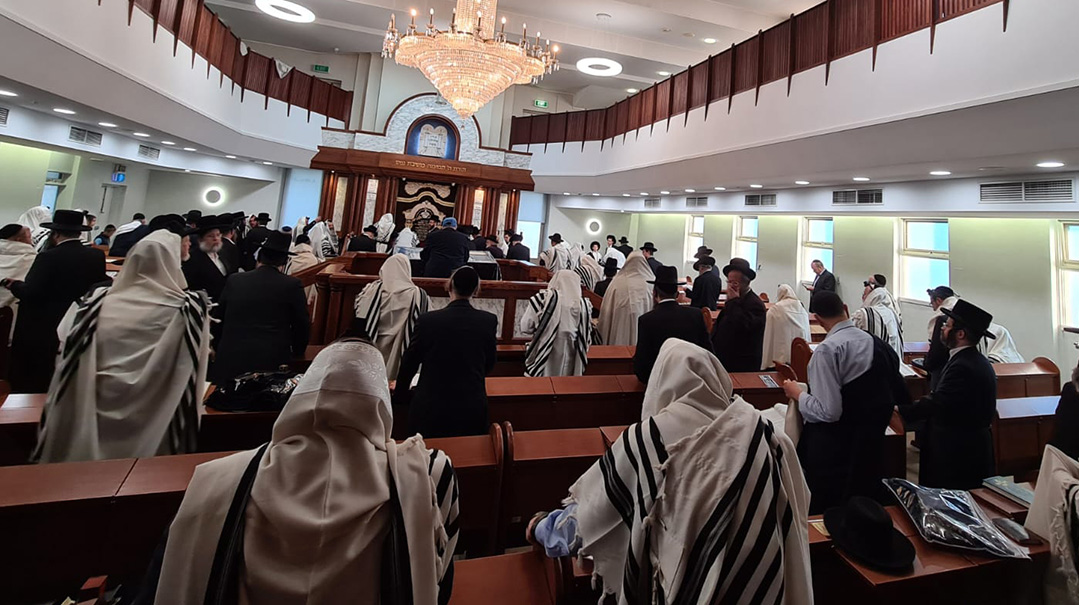
If you want to get the right minyan, Shacharis involves a bit of advanced planning
The Best of Everyone
As Shabbos comes to Melbourne, I join with the kehillah in being among the first to welcome the Shabbos Queen into the world. Australia, seven hours ahead of Israel and 14 hours ahead of the East Coast of the US, will always be the second to welcome any date, aside from New Zealand.
After the seudah, I join the crowd at a chassidic-style zitz at the home of Rav Shlomo Kohn, who became rav of the kehillah in 2019 after the move to Jerusalem and petirah of Rav Avraham Zvi Beck, leader of the community for nearly 30 years.
In his living room on Gordon Street, the former Jerusalem rav and posek warmly welcomes the gathered kehillah members, who in between fervent singing will listen to the Rav’s eloquent divrei Torah. This is just one more thing that makes the community so special.
On Shabbos morning, I’m honored with davening from the amud. Hours before davening starts, the shul is filled with people learning. These are types of Yidden who make their Torah learning a priority.
I tried to find a suitable way to define the Australian chareidi Yid. They have endless Hungarian-style warmth, pure ahavas Torah, and an inborn tranquility that perhaps comes from the comfortable lives that Australia offers its citizens.
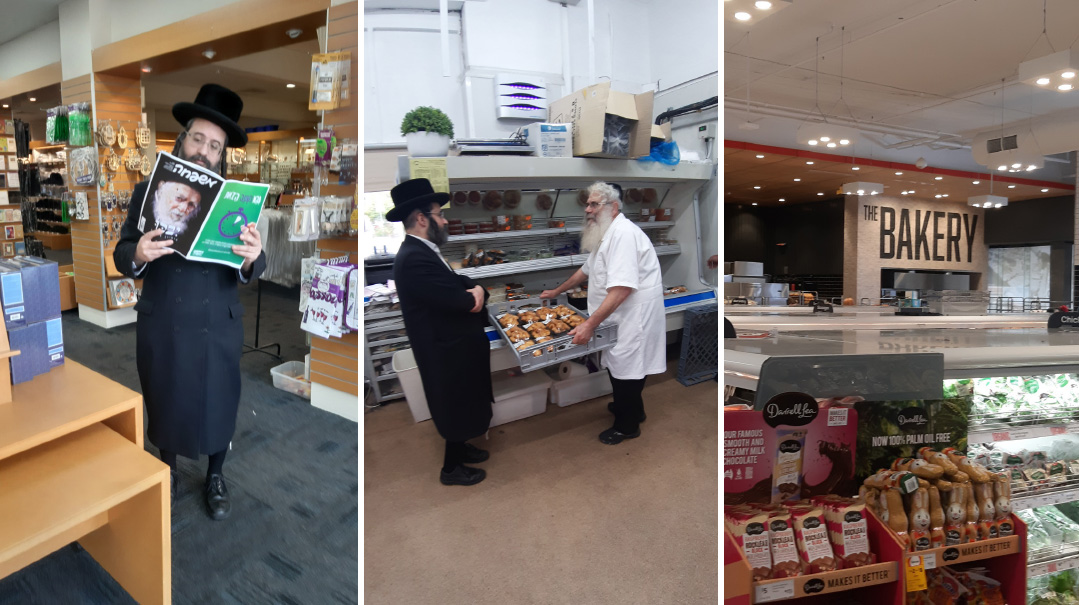
(L)Finding the week’s Mishpacha was a treat, even though the color was missing; (R) The central Jewish shopping area is bustling Erev Shabbos, but it looks like some of the empty storefronts didn’t survive Covid
Locked In
From the early years of the 20th century, Jewish immigrants to Australia — mainly from Lithuania, Russia, and Poland — lived in the suburb of Carlton. Rav Joseph Lippman Gurewicz, who came here in 1930 from Vilna to collect funds for the Vaad Hayeshivos, made an enormous impression on the Jews of Carlton. Two years later, he returned with his family — officially, to be the rabbi of the main shul (Agudath Achim), but in effect to be the “shtot rav” of all the immigrant shuls. He regularly corresponded with Reb Chaim Ozer Grodzenski, and he organized a siyum haShas in 1943 and thereafter every year. He became unhappy with the standards of the existing beis din, and started his own, which functioned until his death in 1956 and generally raised the standards of frumkeit.
Local Melbourne Jews had founded Beth Ephraim in 1943. With an influx of Hungarian immigrants after World War II, in 1950, Beth Ephraim moved to its current address and changed its name to Adass Israel. As well as a shul with various minyanim, the community is home to girls’ and boys’ schools, a mesivta, a yeshivah, a kollel, a seminary, shechitah, a mikveh, and at least a dozen Chabad Houses in various suburbs. Rabbi Yitzchok Dovid Groner, the personal emissary of the Lubavitcher Rebbe, served the community from his arrival from New York in 1958 until his death 50 years later in 2008. He was very highly regarded throughout the community, including Adass Israel.
In between there are a number of additional shuls: Merkaz HaTorah (Rav Yehudah Kohn), Heichal HaTorah (Rav Moshe Donnebaum), Sha’arei Tefillah (Rav Arieh Berlin), Kollel Beth HaTalmud (Rav Binyamin Wurzburger), Gur, Rambam Sephardi Congregation (Rav Shlomo Sabbah), and Vayatzev Avrohom.
The community’s umbrella services are incredibly expansive, for both the public and for individuals, from cradle to grave. In addition to an array of educational institutions, and the only kashrus organization in the country that ensures chalav Yisrael products, there is also a plethora of gemachim and chesed organizations.
The community’s first rav after the Holocaust was Rav Yaakov Yitzchak Neimann, a Belzer chassid known as the Pupa Rav. He didn’t remain there long, moving on to Montreal in 1953, but he laid the foundations, set the guidelines, and established the regulations that the community is bound to until today. Rav Neimann was followed by Rav Betzalel Stern, Rav Elimelech Ashkenazi, and Rav Avraham Zvi Beck, who in his 30-year-tenure, became a rebbe of sorts, to the extent that when I ask the rosh hakahal if any rebbes ever lived in Melbourne, he doesn’t hesitate when he replies, “Well, there was Rav Beck…”
In fact, Rav Beck was so devoted to the kehillah that in 2012, during a particularly difficult fiscal crunch time, he sold his personal heirloom menorah for $90,000 — the amount owed to the Melbourne kollel.
In June 2018, just two weeks after moving to Israel due to ill health, Rav Beck passed away at the age of 85. He was succeeded by Rav Shlomo Kohn, a renowned posek from Jerusalem and one of the eminent talmidim of Rav Shmuel HaLevi Wosner. It’s a bit of a coming full circle, as Rav Kohn has childhood memories of Rav Neimann from the time the latter moved to Montreal from Australia. Just months after taking the position, Rav Kohn lost his brother, renowned philanthropist and bris expert Rav Avraham HaKohein (Rami) Kohn of Brooklyn, who succumbed to Covid at the beginning of the first wave.
Several months after Rav Kohn came here to take up his position, he was just getting to know the community when Covid broke out. The Rav instructed that the shul be closed down right away, but he couldn’t fathom what would transpire over the coming two years, as Australia entered two years of harsh regulations, including nine months of nearly hermetic lockdowns. No one went in or out. That was when the Rav’s strength of character emerged full force. He visited the homes of community members to encourage them and give them chizuk. He delivered Torah shiurim to anyone who asked, and served as a listening ear to people who needed attention.
And then the Yamim Noraim of 5782 arrived. In most of the world, public gatherings and davening were permitted, but in Australia, government regulations peaked, and community members who wanted to daven with a minyan at least on these holy days were targeted by the authorities. On Rosh Hashanah, many Yidden davened in secret minyanim in private homes, as the police patrolled after them and tried to discover the locations of these gatherings.
But then there was another minyan. The media and police got a tip-off, and waited in ambush from around five a.m. when the worshippers gathered. The officers decided not to force their way into the shul, and instead waited for worshipers to come out. And waited. The Jews refused to leave until nightfall, and each received a fine equivalent to about US $4,000 upon exiting the shul. The incident was publicized around the world, casting a pall on the ties between the community and the authorities.
Then came Yom Kippur. “Already on Erev Yom Kippur, I noticed five police cars parked near my house,” Rav Kohn says, describing the beginning of the drama. “The Jewish area was teeming with policemen, some of them mounted on horses. They came with a determination to prevent any gathering, even by force.”
At the time, the Rav did the only thing he could do. “I sat at home and davened to HaKadosh Baruch Hu for a miracle. Meanwhile, sunset was approaching, and I knew that they were waiting for me at my minyan.”
It was getting late, and there was no way for the Rav to leave his house — there was too much surveillance. But it was Yom Kippur eve, there was a minyan waiting, and they’d already been in lockdown for a year and a half. Meanwhile, the gabbai had managed to take the Rav’s kittel and machzorim, and a while later the Rav walked out, ostensibly to get some fresh air. In the middle of his “walk,” Rav Kohn slipped into one of the secret minyanim in the area.
At his Kol Nidrei speech, Rav Kohn encouraged the mispallelim, telling his small crowd, “Today, our tefillos are about mesirus nefesh. Now, when we go out to daven with minyan, at the risk of a very high fine, we are stating that our tefillah is worth a fortune. May we merit to return to our shuls very quickly.”
The Rav emphasizes, however, that the storm grew out of control. “In essence,” he says, “aside from the Yamim Noraim, there was never a need to forgo tefillah with minyan or mikveh. These isolated events tarnished our image badly, and it was not really fair.”
On Simchas Torah, the Rav went from one small minyan to the next dancing hakafos. About three months ago, after most of the citizens were already vaccinated, the government began to ease up the regulations, and this past March, the borders were finally opened to foreigners. The chareidi community in Melbourne is very grateful, that in contrast to other communities, no one in their community was lost.
Now that Covid is behind us, at least as far as the local authorities are concerned, Rav Kohn has galvanized to strengthen the community — upgrading the kashrus, expanding the eiruv, and trying to recruit new members. There are plans to erect a new, affordable Jewish neighborhood in a different part of Melbourne, where housing is still very reasonable (with a housing spike, reasonably priced housing has become virtually impossible to find in the heavily Jewish areas).
For Rav Kohn, every minute is precious, but that didn’t stop him from taking a break from his busy schedule to pull out a globe and show us one of the biggest halachic issues that Jews traveling to Australia have to deal with: the international dateline. While the civil international dateline runs through the Pacific Ocean to the east of Australia and New Zealand, the dateline according to the Chazon Ish cuts through the Australian continent. While Melbourne is west of the dateline (meaning it’s together with the most of the world, 14 hours ahead of New York), the Chazon Ish ruled that the city is drawn after the entire continent — but the ruling applies only to the dry continent, not the water areas. So the city of Melbourne, along with the eastern part of the continent, is on one date, while the water that surrounds it is on the other side of the dateline. That means that when it’s Sunday in Melbourne, in the water that surrounds it, it is still Shabbos. This is why the Jews of Melbourne cannot go boating until Sunday evening.
The dateline issue poses a host of other questions, such as disappearing days at times like Sefirah and Chanukah, which is why some people won’t fly from the US to Australia during Sefiras Ha’omer unless they will return before Shavuos. In any case, Torah-observant visitors to the continent should clarify the relevant halachos with their rav or posek.
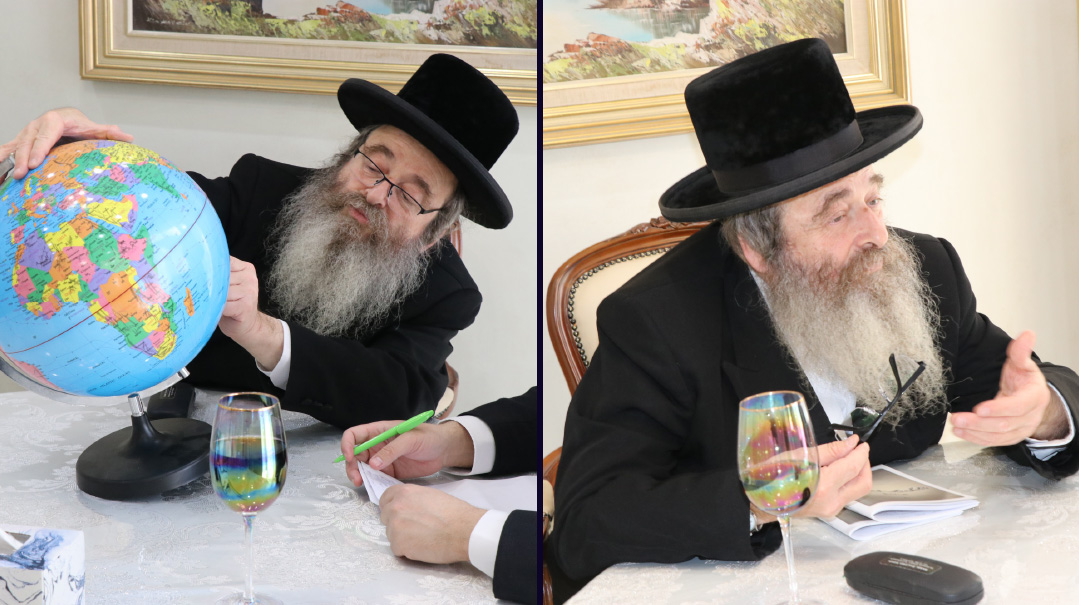
For Rav Kohn, every minute is precious, but that didn’t stop him from taking a break to pull out a globe and discuss the biggest issue travelers to Australia have to deal with
Ghost in the Garden
“The first Jews who came to the continent were prisoners sent here from England in 1788,” says Reb Shimon Opman, one of the community’s colorful chassidic personalities. He relates that in the shul of that time there was a special section cordoned off with iron chains for the Jewish prisoners who were permitted to come to tefillos under strict limitations.
Since then, lots of water has flowed down the Yarra River, and more Jews came to Australia after the gold rush in the 1850s or fled here from the pogroms of Europe. They established small and large Jewish communities throughout the continent.
We decide to pay a visit to David Stone, a fourth-generation Australian and a descendant of the founding members of Melbourne’s frum community. Reb David is a direct descendant of Reb Zev (Woolf ) Davis, who came to Australia from England in 1857, joining thousands of others in the search for gold. He first settled in Ballarat, where a large Jewish community of gold prospectors formed.
David related that the journey to Australia took his grandfather between three and six months. He was together with his wife and seven children, one of whom passed away during their travels. He shows me a picture of Reb Woolf with his two sons. The second from the right is Binyamin, who had a pearl factory, and tragically died together with the passengers of the Koombana, which sank. (David, who purchased his home from a local priest, says that once when there was a party in the garden, the guests were astonished to see a spirit in the form of Binyamin Davis crossing the garden. David imagines that perhaps the soul of the deceased is not at peace, because he did not merit to be buried.)
Reb Woolf later settled in Melbourne, where he joined Rav Avrohom Eber Hirschowitz, who was a rav at the time. After Rav Hirschowitz left, Reb Woolf didn’t especially like the new rabbi, and so he moved the minyan to his house. When David visited the old house a few years ago, he was in for a surprise.
“When I went down to the cellar,” he says, “I saw that some of the floor was different from the rest. I went to check the building plans at the town hall, and I learned that this part of the cellar was actually a mikveh, which was later filled with cement. On the second floor, I found the remnants of a succah.”
Reb Woolf was not only a talmid chacham and yerei Shamayim, he was also very wealthy and sent huge sums to the Jewish yishuv in Jerusalem. There is still a shul in the Nachlaot neighborhood built with his money, with a plaque on the wall expressing appreciation for Reb Woolf Davis of Australia. David himself held a bar mitzvah for his son in his grandfather’s shul.
David tells the story of how his great-great-grandfather jumpstarted his wealth: “He once participated in a bid for merchandise that people did not come to pick up from the port. It was Erev Yom Tov. He could have made a fortune, but because candle-lighting time was drawing near, he left. When he returned on Motzaei Yom Tov to the port, the supervisor told him, ‘You’re too late, everything was sold. There’s only one container left, and you can take it for a quarter of the price.’ The treasures he found in that container made him rich for the rest of his life.”
Reb Woolf’s son-in-law was Yosef Stone, David’s grandfather. He strengthened Yiddishkeit in the Jewish community in Melbourne, and like his father-in-law Reb Woolf, was very involved in taharas hameis with mesirus nefesh, even before there was an organized chevra kaddisha. The work in the chevra kaddisha remained a fundamental in the Stone family; David himself is also a member.
David was born and raised in the Carlton neighborhood of the city. It was the Jewish Quarter at that time. “There was no frum school then for me,” he relates. “I attended public school and at the end of the day, and on Sundays, we went to the Talmud Torah.
“Thirty years ago, when the old shul in the Carlton area was sold, they asked us to come and collect the seforim” he continues. “We went one day and packed up everything that was left, storing the boxes in our house. A few years ago, we opened them and found three ancient Gemaras that belonged to Rav Nosson Adler, known as ‘Hanesher Hagadol’ — the rav of the Chasam Sofer. There were annotations in his handwriting. Of course, we gave these in to antiques experts, who affirmed their authenticity.”
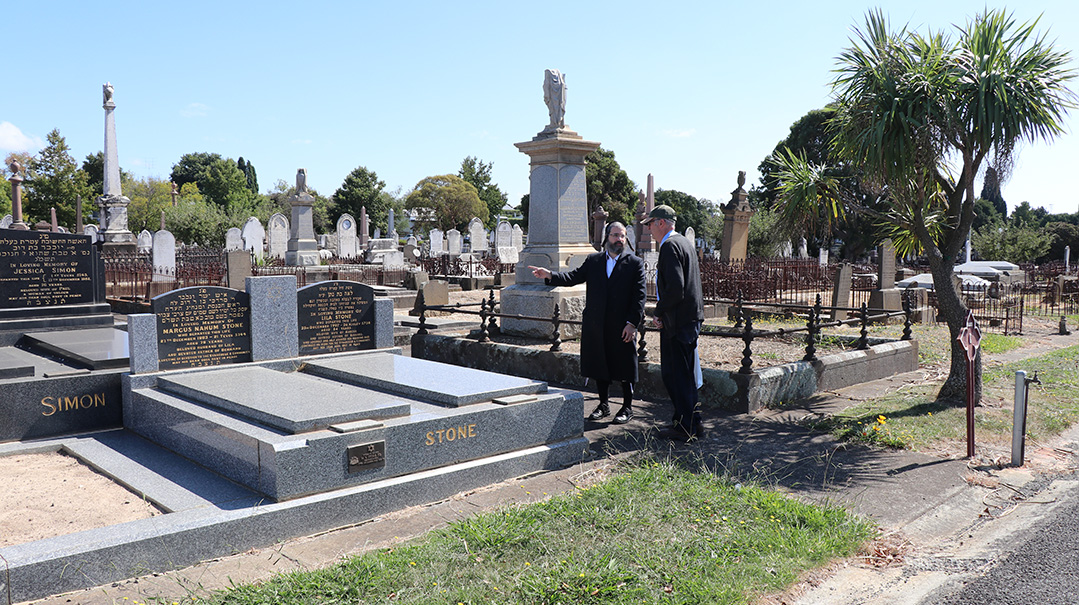
Bernard David, the last Jew in Ballarat, takes me to the Jewish cemetery. The town was filled with prospectors, but even while looking for gold, they didn’t ignore their spiritual needs
Go for the Gold
Dr. David Havin, author of a book on the early history of Orthodoxy in Melbourne, agreed to accompany me to the old gold prospecting town of Ballarat, where the gold fever began.
“Jews from all over the world came there, not only from Europe, but even from America,” he explains. “Some of the Jews worked in mining gold from beneath the ground, but many others earned a livelihood by providing services to the mines. That’s how the community developed. When Chief Rabbi Nathan Marcus Adler of London decided to establish a beis din in Australia, he did it specifically in Ballarat. It was the only beis din in the British Empire not located in London. It didn’t happen in Africa or Canada, which was also under the British Crown. In 1864, Rav Shmuel Herman came from England to serve as the rav and rosh beis din, and he lived in Ballarat. A number of years before he passed away, he moved to Geelong, where he is buried.”
The president of the community was Nachman Freidel Spielvogel. He was originally from Kolomyia in Galicia, but he spent part of his life in India, until he finally landed up in Ballarat. From there, he submitted articles to the Hamaggid newspaper.
Indeed, in a volume of Hamaggid from 1877, there is a moving report about the arrival of the telegraph to Australia. He wrote: “The submarine telegraph to Australia is very good, and each day news arrives to us from England in a short time, about two and a quarter hours, which is absolutely amazing and wondrous and has never been heard of before… If a person had come a few years ago and said this was possible, he would have been considered crazy — Baruch Hachonen l’adam da’as.”
Reb Nachman became known when he donated a sefer Torah to the community and held a hachnassas sefer Torah on Hoshana Rabbah. It was reported in the media how the people learned all night in Reb Nachman’s house, and the next morning they escorted the sefer Torah to the shul, as the local police cleared the road and paid their respects.
When we arrived, there to greet us was Bernard Davis. Bernard is probably the last Jew in Ballarat, which numbered about 300 Jewish families in its prime. He has the keys to the shul, which is now being renovated. It is closed to visitors, but Bernard opened it for us.
Bernard is a fourth-generation resident of the city. He was born in 1951, and celebrated his bar mitzvah here a little more than 70 years ago. His grandfather Marcus Stone, who was president of the community, organized the event.
“From the late 1960s or so, they no longer davened here,” Bernard says. “The last bar mitzvah that took place here was 15 years ago.”
I ask Bernard if he remembers the golden age, and he laughs. Of course he can’t remember, but he certainly knew his grandmother, Henna Stone, daughter of Jacob and Julia Bernstein, who married at the height of the golden age of Ballarat. Bernard relates that Ballarat was so Jewish that there were two Jewish mayors during those years.
We visit the shul amid the scaffolding. The government is funding some of the restoration and other funds are from outside donations. At that time, the shul was so active that there were five sifrei Torah in the aron kodesh. Even Yidden searching for gold didn’t ignore their spiritual needs and gave it a prominent place in their lives.
In the Jewish section of the main Ballarat cemetery, the headstones and their inscriptions tell the story of a community of Jews searching for gold but keeping their priceless values intact.
(Originally featured in Mishpacha, Issue 911)
Oops! We could not locate your form.






